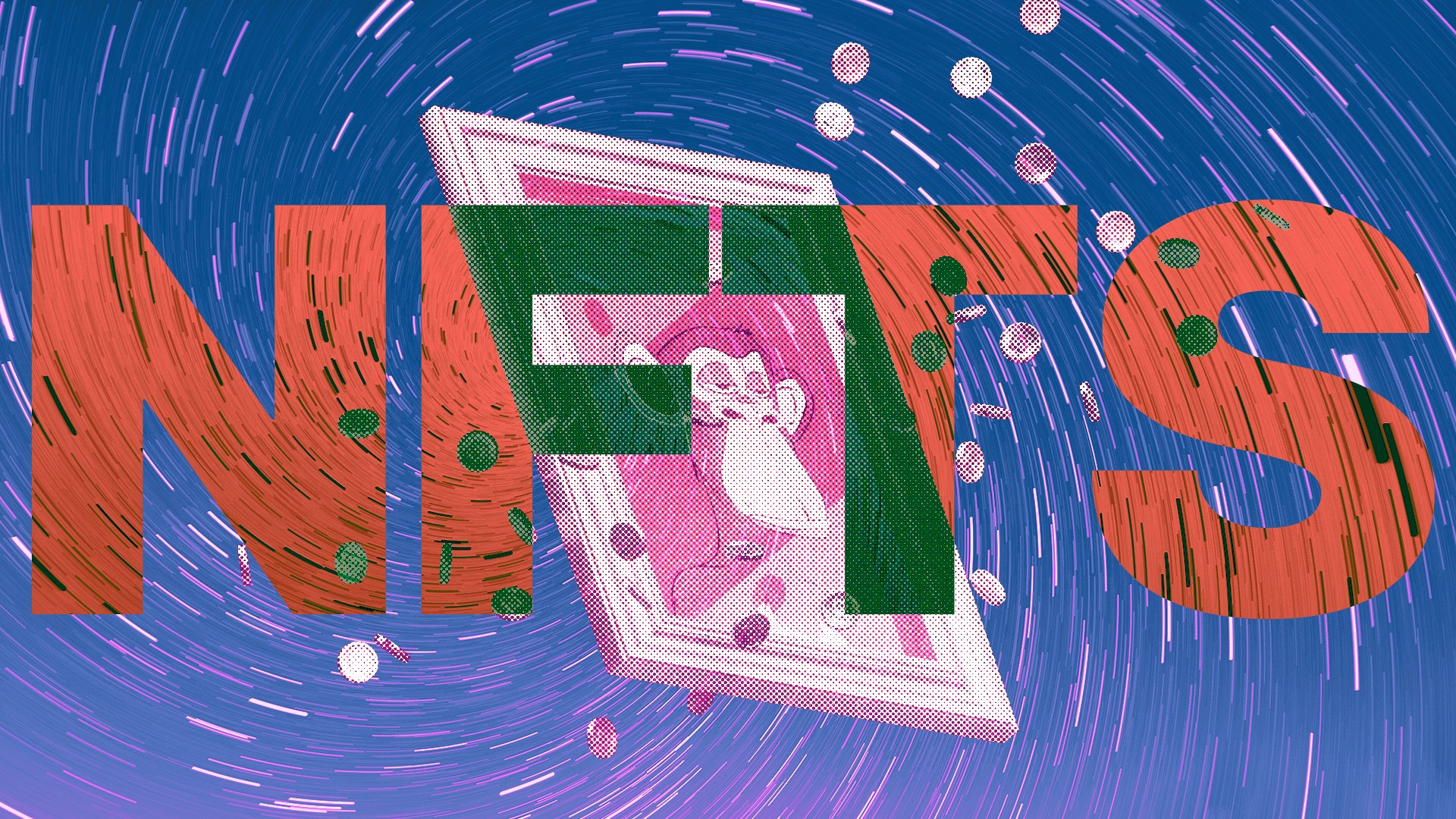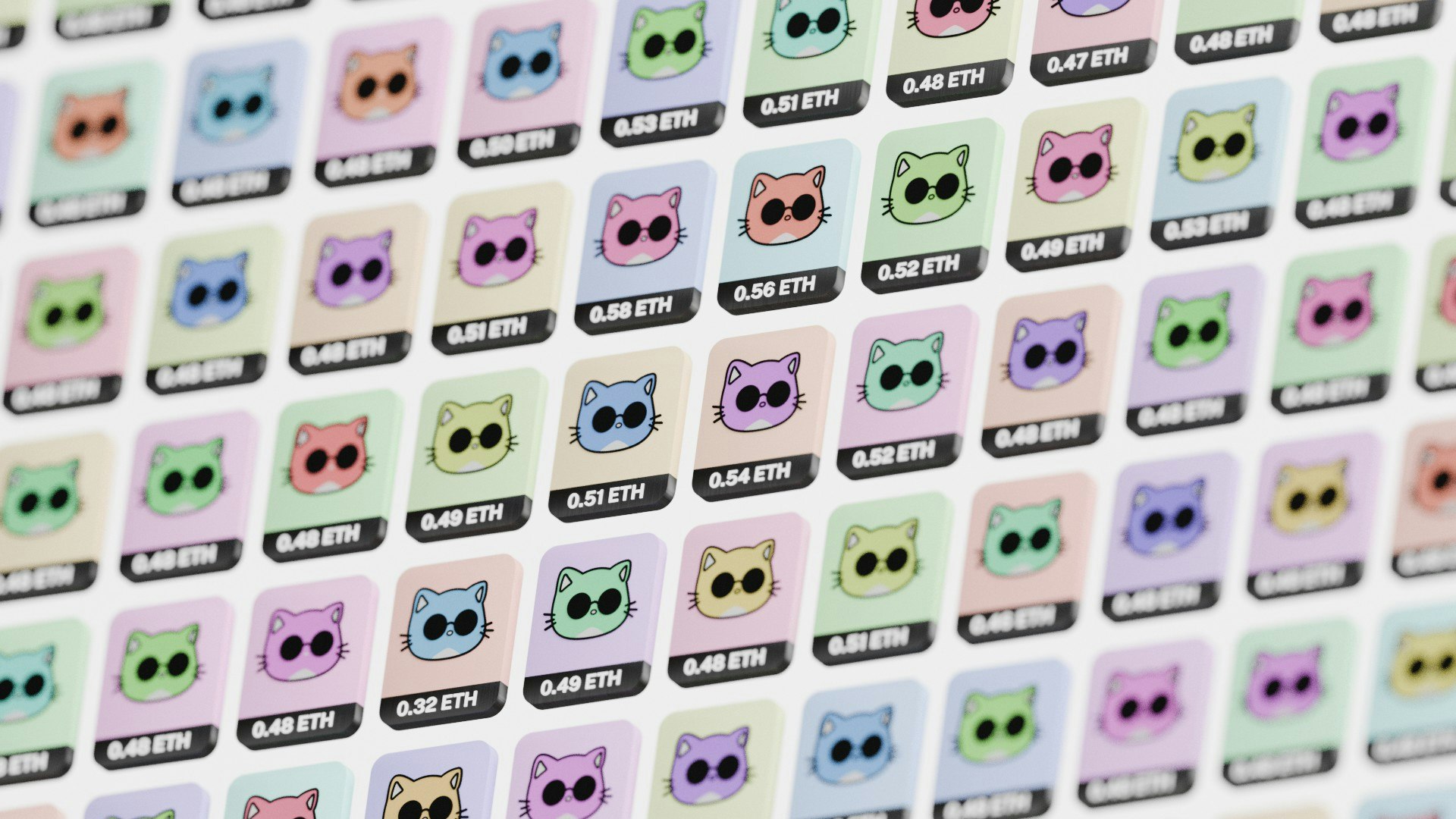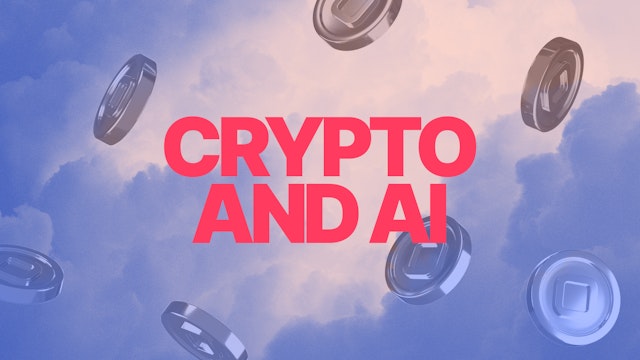Get $20 in free Bitcoin when you sign up and buy $50+ in crypto before January 31, 2026. Terms apply.
What is an NFT? Non-Fungible Tokens Explained
An NFT is a digital version of those rare, one-of-a-kind collectibles that people go wild over, like traditional art or baseball cards.
In this article...
- NFTs are unique crypto-assets that cannot be duplicated or exchanged for anything else
- NFTs are built with smart contracts
- They are still popular, despite falling in value from their price peak in 2021.

You may have heard of NFTs, or Non-Fungible Tokens. But what are NFTs, and why do they matter?
NFTs: Still popular
An NFT is a digital version of those rare, one-of-a-kind collectibles that people go wild over, like traditional art or baseball cards.
Their value peaked in 2021/2022 and then their price fell, leading many people to feel that NFTs had had their day. But just like any market, ie the stock market or even the collectibles market, NFT prices tend to rise and fall alongside other markets. There is still a lot of activity in buying and selling NFTs on various NFT marketplaces. And you can buy and sell them usually for different cryptocurrencies as well as fiat.
While prices may be down since the peak, they are still a popular item. For example. Donald Trump has offered two series of NFTs, and both collections have sold out.
What are NFTs?
NFTs are unique crypto-assets that cannot be duplicated or exchanged for anything else. Since they are stored on the blockchain, this means they are decentralized, immutable, and verifiable. This also means that their transaction history can be viewed by anyone.
It’s a great way to attach value to digital objects such as music, art, real estate, concert tickets, loyalty passes and more. Owning an NFT is like having a digital certificate of authenticity and proof of ownership for a specific digital asset.
For some people, NFTs have become an incredibly lucrative opportunity. Like traditional art or collectibles, rare NFTs can be sold for millions. Popular NFTs that have made headlines include Crypto Punks and Bored Ape Yacht Club (BAYC).
NFT creators
And for the creator of the NFT, as NFTs are built with smart contracts. This means that their creators can code the contract to earn a commission upon every future sale of the NFT.
This is a significant advantage compared to traditional art sales. This means that the original creator can receive a percentage of every sale that the NFT generates, providing a continuous stream of revenue.
What are the different types of NFTs?
NFTs also come in various forms that cater to different interests. For example, an NFT could represent a rare piece of artwork, a limited-edition sports card, a recording of a live concert, a unique gaming item, or a popular meme.
Popular types of NFTs
1/1’s (One-of-ones)
1/1s are singular items, such as digital art and domain names, and are evaluated based on factors such as the quality of the art, the reputation of the artist, and the desires of other collectors. In March 2021, Beeple sold a 1/1 NFT for $69 million at Christie’s.
Collectibles
Collectible NFTs, like other collectibles (think baseball cards), are evaluated based on their rarity, cultural significance, and community, among other factors.
In-game NFTs
NFTs have enabled gamers to own and purchase in-game assets, which can be represented as NFTs and used to represent in-game items (e.g. suit of armor) in virtual worlds. One leading game in this space is Axie Infinity. Players can potentially make a profit by buying, breeding, and battling with NFTs.
NFTs in DeFi
In DeFi, NFTs are used in staking, which involves locking up NFTs on a platform or protocol in exchange for passive income via staking rewards.
How to access, buy, store and sell NFTs?
If you're wondering how to access, buy, store, and sell NFTs, here's what you need to know.
Let's start with buying and accessing NFTs.
Buy NFTs: Here’s what to know about buying an NFT
There are two ways to buy NFTs. You can either mint an NFT for the first time or buy one on a secondary market.
Minting an NFT
Minting an NFT refers to creating it on a blockchain for the first time. Minting a collection’s NFT often lets you buy the NFT at a lower price than what it’ll sell for on the secondary market.
Before the mint, you should know which blockchain the mint is happening on and have your wallet loaded with enough tokens to pay for minting and gas fees. Most mints happen on the project’s website. You typically need to connect your wallet, click a button to mint the NFT, and pay the mint and gas fees.
Buying an NFT on a secondary marketplace
If you missed the initial mint, you can buy an NFT on the secondary market. NFTs that feature digital artwork are typically sold on specific marketplaces such as OpenSea, Magic Eden and Rarible.
To buy an NFT on the secondary market, you can browse them based on category, artist, or price, and once you find one you like, you can make an offer or purchase it outright.
Selling an NFT
To sell NFTs, you'll need to set a price and wait for a buyer to make an offer or purchase it at your listed price. When selling NFTs, you'll need to set a target price, list the NFT for sale, and accept an offer.
To set a target price for your NFT, consider historical price movements, rare traits and fees.
Storing your NFTs
Storing NFTs is similar to storing other digital assets such as cryptocurrency. You can store your NFTs in a digital crypto wallet. A crypto wallet is software or hardware that lets you own your crypto and make transactions. There are two types of wallets, hot wallets and cold wallets.
Hot wallets
A hot wallet is a digital wallet with internet access that enables common activities like sending crypto and interacting with decentralized software. These wallets are typically desktop or mobile programs that give investors a simple self-custody option. Some popular wallets include MetaMask, TrustWallet, and Edge Wallet.
Cold wallets
A cold wallet, in contrast, is a custody solution that stores money offline, thereby enhancing security. Receiving money or digital assets, and storing it for a long time are the main uses of cold wallets. Some popular cold wallets include Ledger or Trezor.
Hot wallets vs. cold wallets
Our recommendation is to start with a hot wallet then transfer your long-term assets to a cold wallet. Hot wallets are connected to the internet. Compared to cold wallets, they are less secure but more practical. To protect your long-term assets, it is worth the expense to purchase a cold wallet and keep your long-term investments there.
A history of NFTs
What was the first NFT and who created it?
The first NFT ever made, called Quantum, was minted in 2014 by Kevin McCoy on Namecoin.
The History of NFTs: From CryptoKitties to Today
With the release of CryptoKitties in 2017, a blockchain-based game that let users buy, breed, and trade exclusive virtual cats using Ether, the currency of the Ethereum blockchain, NFTs gained popularity. The Ethereum network became clogged as a result of the game's popularity, which led to longer transaction times and more expensive fees.
Afterward, the popularity of NFTs skyrocketed, with participation from well-known athletes, artists, and brands like Nike and Gucci.
However, the average value of NFTs has fallen since then, but that does not mean that they will not rise again. Nobody has a crystal ball that can see into the future!
Why do NFTs matter?
NFTs are transforming the way we think about digital ownership and value. They give digital assets a new level of rarity and authenticity, and potential uses for them outside of the art and collectibles industries are only just beginning to be explored.
The Role of NFTs in the Art World
NFTs are important in the world of art because they offer a means of authenticating digital art and guaranteeing its provenance or origin. NFTs offer a safe and transparent way to confirm ownership and transferability, in contrast to more conventional methods of authentication, such as certificates of authenticity.
They also make it possible for artists to sell their work directly to collectors, without relying on galleries or auction houses.
Some arthouses are even buying hugely famous and expensive artworks, and dividing ownership into hundreds of pieces, represented by an NFT. That way, everyday people can part-own a Banksy or a Warhol.

The Role of NFTs across industries
In the sports industry, NFTs are becoming more and more popular because they can authenticate and sell digital trading cards or highlight reels, like NBA Top Shot.
NFTs in the music industry can give fans the opportunity to own a special item of memorabilia, such as live performances, autographed album covers, or a way to directly support up-and-coming musicians.
The ownership of digital assets in DeFi, such as loans or insurance policies, can also be represented by NFTs.
NFTs are revolutionizing manufacturing and supply chain management, where they track product origin and verify the authenticity of luxury goods, with brands like Gucci and Burberry exploring their use.
What are the challenges with NFTs, from an ethical, legal, and social perspective?
NFTs have come under scrutiny due to concerns over fraud and theft, which is partly attributed to the speculative nature of NFT investments.
From a legal perspective, ownership and rights associated with NFTs can be ambiguous. Owning an NFT representing a piece of artwork does not necessarily grant the owner copyright or intellectual property rights related to the artwork. This creates potential legal gray areas and disputes.
What does the future look like for NFTs?
NFTs have already revolutionized the art world and are expanding to other industries.
Brands that are experimenting with NFTs
Starbucks run a Web3 Odyssey program, which will incorporate blockchain and NFTs into their loyalty program.
Salesforce is creating a suite of Web3 products, including tools for creating and managing NFTs.
Breitling is using NFTs to authenticate the ownership and history of their watches through their digital passports.
Ticketmaster is enabling artists with their own NFT collections to offer NFT-Gated concert and event presale tickets to their fans.
What is the technology underpinning NFTs?
ERC-721 and ERC-1155 are two technical standards used to create non-fungible tokens on the Ethereum blockchain.
ERC-721 is a set of rules that defines how to create non-fungible tokens. Each token created using the ERC-721 standard has a unique digital signature, which ensures that it cannot be duplicated or replicated.
ERC-1155 is more flexible than ERC-721, allowing developers to create both unique NFTs and fungible tokens in a single contract. This means that developers can create collections of tokens that include both unique, one-of-a-kind NFTs, as well as fungible tokens that can be exchanged for one another.
The future of NFTs
NFTs may eventually be used for things like voting and real estate, according to some experts. Who knows, maybe one day all of us will purchase our morning coffee using NFTs.
As for what's on the horizon, the possibilities are endless and the future is wild. But hey, at least we'll have some cool digital tokens to show for it.
NFTs: Conclusion
Non-Fungible Tokens (NFTs) are unique digital assets that are stored on a blockchain, providing a high level of authenticity and scarcity to digital content. NFTs cannot be replicated or exchanged, making them one-of-a-kind, and offering proof of ownership that is easily verifiable.
Blockchain technology and NFT projects have changed what digital files are used for. They can represent ownership to a work of art, or even a house. They can represent anything from the real world like a car, to art depciting Nyan Cat, and NFT stand, a video clip, or even Beeple's Everydays: The First 5000 Days.
NFTs work like digital certificates of authenticity, verifying ownership of unique digital items. Just as physical art collectors can buy and sell pieces in galleries, video game enthusiasts or art aficionados can use NFT marketplaces like OpenSea to trade digital items or even virtual representations of physical art. This takes place on NFT marketplace OpenSea and other marketplaces online.
To mint NFTs, one must have enough tokens and know the blockchain the mint is happening on. To buy an NFT on the secondary market, marketplaces like OpenSea, Foundation, or Rarible can be used.
To sell NFTs, one needs to set a target price and list it for sale, and store it in a digital wallet. When storing NFTs, it's recommended to start with a hot wallet and move long-term assets to a cold wallet like Trezor or Ledger for better security.
Overall, NFTs have already revolutionized the art world and are expanding to other industries, with companies like Starbucks, Salesforce, and Breitling exploring their potential.



Suggested Articles

Fantom to Sonic: What CoinJar Users Should Know
What is happening with Fantom? What is Sonic? Here is everything you need to know.Read more
Introducing CoinJar's New “Lock Feature” in Case Something Sus Happens
The Lock feature is here! CoinJar has launched a new feature designed to give you greater control over your CoinJar account security. Read more
How AI Is Being Used in Cryptocurrency
AI is marching fast into every sphere on the planet, and crypto is no exception. Here are the latest developments in the merging of crypto and AI. Read moreBrowse by topic
Your information is handled in accordance with CoinJar’s Privacy Policy.
Copyright © 2025 CoinJar, Inc. All rights reserved.
CoinJar, Inc. is a registered Money Services Business with FinCEN and licensed as a money transmitter, NMLS #2492913. For a list of states in which CoinJar, Inc. is licensed or authorized to operate, please visit here. In certain other states, money transmission services are provided by Cross River Bank, Member FDIC.
This site is protected by reCAPTCHA and the Google Privacy Policy and Terms of Service apply.

